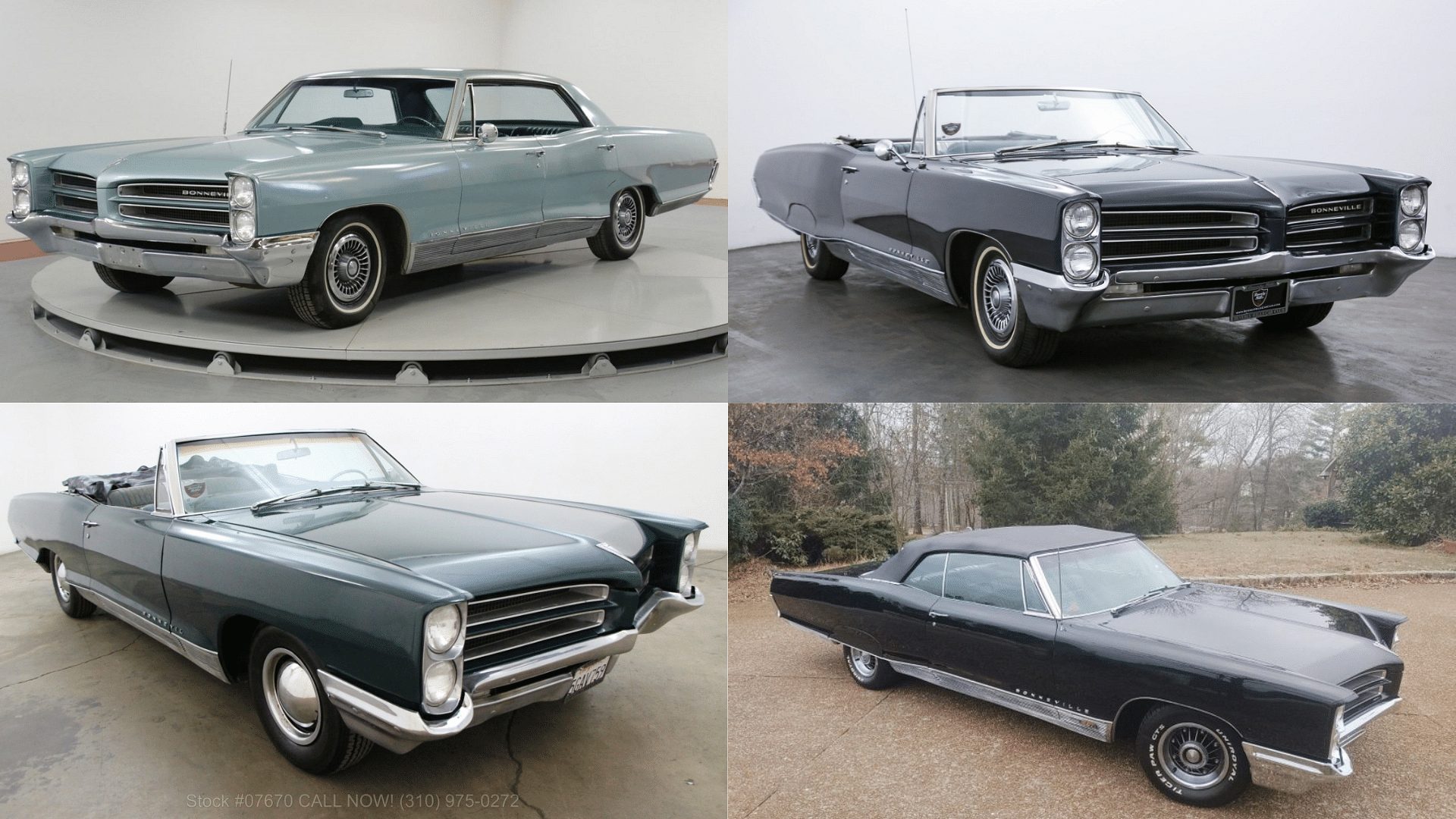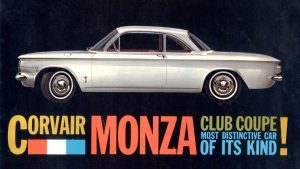
When it comes to classic cars, few models have the timeless appeal and distinctive style of the 1966 Pontiac Bonneville. In this article, we will delve into the rich history and unique features of this iconic vehicle. From its inception to its enduring legacy, the Pontiac Bonneville continues to capture the hearts of car enthusiasts and collectors around the world.
The Birth of a Legend
The Pontiac Bonneville made its debut as a luxurious, top-of-the-line model in the Pontiac vintage lineup. Named after the famous Bonneville Salt Flats in Utah, known for their high-speed racing, the car was destined for greatness from the start.
The Pontiac Bonneville 1966, a part of the fourth Bonneville generation, debuted in 1965, boasting an evolution in design from the previous year. Sharing a 124-inch wheelbase platform with the Grand Prix, it stood as Pontiac’s largest offering at the time. Noteworthy for its spacious interior and distinctive exterior design featuring a lengthy hood, expansive grille, and stacked headlights, the 1966 Bonneville held its own. Beneath the hood, an overhead valve V8 engine delivered ample power, with options spanning 389 to 421 cubic inches and 290 to 376 horsepower. In 1966, prices ranged from $2,000 to $4,000, equivalent to approximately $16,000 to $32,000 today. A significant safety feature debuted in 1966 was standard emergency flashers, although the collapsible steering column arrived a year later. These classic cars, like one meticulously maintained example with 143,000 miles under single-family ownership, exemplify their remarkable durability and longevity.
The Epitome of Stylish Design

One of the standout features of the 1966 Bonneville is its striking design. With its long, sleek body, distinctive split grille, and chrome accents, it exudes an air of elegance and sophistication. The sweeping lines and bold curves of the car are a testament to the design sensibilities of the era. The Pontiac Bonneville underwent a subtle yet effective facelift, featuring updated front and rear sheet metal, trim, and brightwork. These refinements gave the car a more modern and sophisticated appearance. You can check out the interesting story of the Pontiac logo in this article.
The ‘66 Pontiac Bonneville underwent a subtle yet impactful makeover, receiving updated front and rear sheet metal, trim, and bright work, resulting in a more modern and sophisticated appearance. Inside, the squared-up dashboard and minor instrument tweaks improved the driver’s experience without unnecessary extravagance. Safety received a boost with the standard dual-circuit master cylinder, mandated by legislation, enhancing braking performance. All of this was built on a comfortable 124-inch wheelbase platform shared with other Pontiacs. The Bonneville’s distinctive styling, known for elegance and prestige, solidified its status as a luxurious standout of the 1960s.
Power Unleashed
Beneath the stylish exterior, the 1966 Pontiac Bonneville boasted impressive performance capabilities. This robust powerplant allowed the Bonneville to deliver thrilling acceleration and a smooth ride. The 1966 Pontiac Bonneville was renowned for its robust performance, particularly in the special 421 HO V-8 Tri-Power 4-speed variant. It featured a V-8 421.2 cubic inches engine, generating 376 horsepower at its peak. This marked a significant improvement from the 1965 Bonneville’s 333 horsepower with manual transmission and 325 with automatic. The 4-speed manual transmission ensured precise gear shifts and optimized power delivery. While exact 0-60 mph times were unavailable, the Bonneville showcased impressive acceleration. The Bonneville boasted luxury amenities like automatic transmission, power soft top, and a comfortable interior, making it a coveted blend of power and opulence in its era. The Pontiac Bonneville 66 was available with both automatic and manual transmissions. The automatic transmission option was the 3-speed Turbo Hydra-Matic. It also made its way into the fastest accelerating Pontiac cars.
Ahead of Its Time

For its time, Bonneville was also ahead of its competitors in terms of technology. It featured innovations such as power steering and power brakes, making it a joy to drive. The interior was designed with comfort in mind, with options for air conditioning and a premium sound system. Inside, the Bonneville received minor but impactful changes, including a squared-up dashboard and instrumentation enhancements, enhancing the driver’s experience without going overboard. Safety received a boost with the inclusion of a standard dual-circuit master cylinder, adhering to legislation and improving braking performance. Disc brakes, though optional, provided an extra layer of stopping power. The Bonneville’s distinctive styling, elegance, and optional 8-Track Tape player reinforced its status as a luxury car of choice during the 1960s, offering a blend of innovation, performance, and prestige. It finds its place in the car collection of legendary celebrities like Vin Diesel, Kid Rock, and John Wayne.
A Legacy of Luxury: Spacious Interior

Step inside the 1966 Pontiac Bonneville, and you’ll be greeted by a spacious and opulent interior. The cabin was meticulously crafted, with plush seating upholstered in premium materials. The attention to detail in the interior design is a testament to Pontiac’s commitment to luxury. This two-door fastback hardtop boasts a striking red exterior paired with a white vinyl top and interior, creating an appealing aesthetic that hints at roominess. Notably, the interior is described as flawless, devoid of any wear, tears, or damage, reflecting meticulous maintenance and excellent preservation. The thoughtful coordination of the red interior with the exterior design underscores the car’s commitment to providing a pleasing and comfortable atmosphere. The convertible model typically offers ample headroom and an airy ambiance, aligning with the car’s reputation for spaciousness. In summary, the 1966 Pontiac Bonneville promises a welcoming and visually appealing environment for occupants.
Customization Options
Based on the GM G-Body Platform, Pontiac offered a range of customization options for the Bonneville, allowing buyers to tailor their cars to their preferences. From a variety of exterior colors to interior trims and accessories, owners could create a Bonneville that was truly unique. For its exterior, Pontiac recommended specific color combinations, limiting wagons to gold, black, and blue interiors, hinting at a potential connection between exterior and interior choices. Classic car enthusiasts commonly explored engine upgrades, possibly opting for a more robust V8 engine. For protection and a tailored fit, custom-fit car covers were also on offer.
The Enduring Appeal: Collector’s Item
Today, the 1966 Pontiac Bonneville has become a highly sought-after collector’s item. Its rarity and timeless design have made it a favorite among classic car enthusiasts. Restoring and maintaining a Bonneville from this era has become a labor of love for many devoted collectors. Its historical significance as part of Pontiac’s iconic lineup adds to its allure for collectors. As evidenced by a 2021 listing of an 11k-mile Bonneville at $15,000. However, prices can vary widely, ranging from $22,000 to $155,000, contingent on factors like condition, mileage, and rarity. The 1966 Pontiac Bonneville remains a timeless and potentially valuable classic car.
Pop Culture Icon

The Pontiac Bonneville has also left its mark on pop culture. It has appeared in numerous films and television shows, cementing its status as an iconic American automobile, renowned for its timeless appeal. Its distinctive “Coke bottle” design, highlighted by a long, commanding hood, captured the spirit of the mid-1960s with understated elegance. Beneath that hood, a potent 389ci V8 engine delivered an impressive performance, a testament to its enduring popularity. Some lucky enthusiasts cherish rare limited editions, like the sole surviving convertible featuring the 421-tri power, 4-speed manual transmission, bucket seats, and air conditioning. Notably, the Bonneville’s allure endured, with nearly 97,000 units sold, bucking the trend of declining sales in the industry. Its influence transcended as it inspired the iconic GTO, sharing design elements that defined an era.







